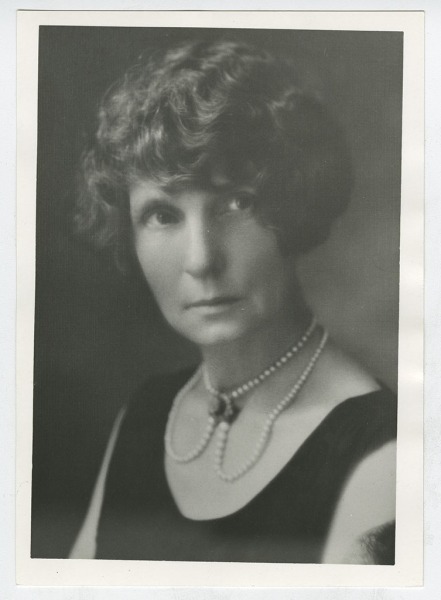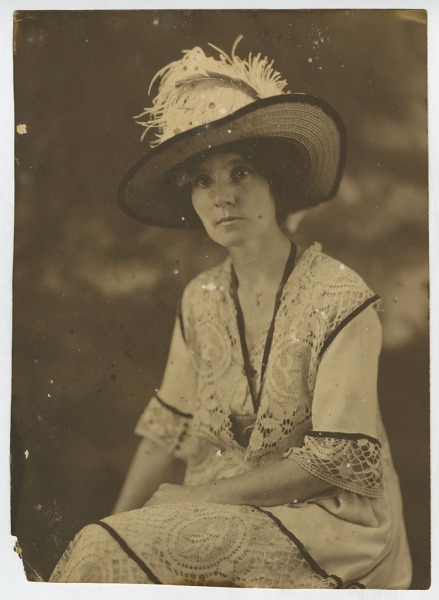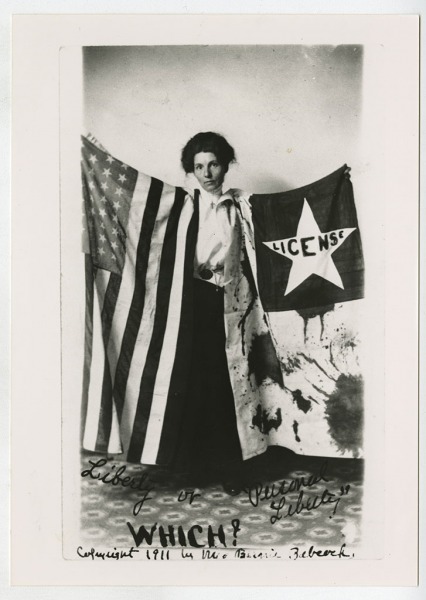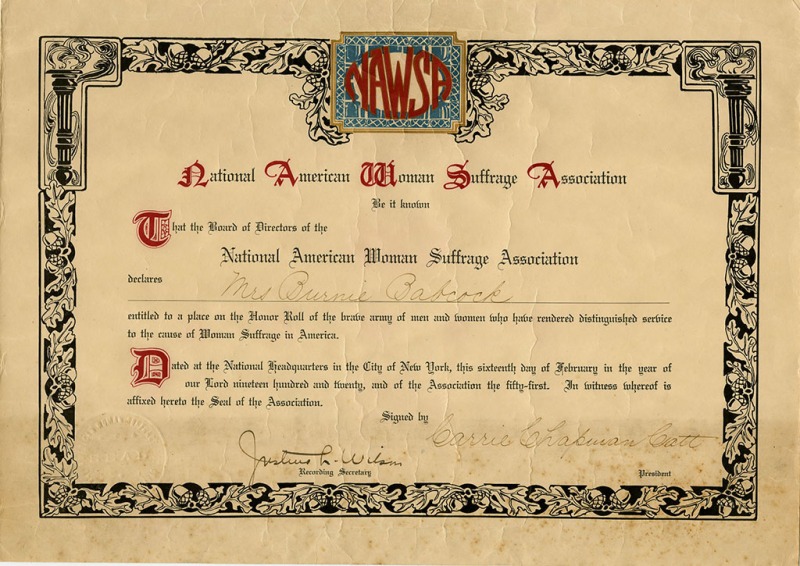In 1868, Julia Burnelle “Bernie” Smade Babcock was born in Unionville, Ohio, to Hiram Norton and Charlotte “Lottie” Elizabeth Burnelle Smade, as the first of their six children. Coincidentally in this same year, Arkansas started its long march to women’s suffrage when Miles Ledford Langley of Clark County proposed women’s enfranchisement at the Arkansas Constitutional Convention.
Babcock’s parents moved from Unionville, Ohio, and settled in Russellville, Arkansas, when Bernie was three-years-old. No doubt unconventional for rural Arkansas, Babcock was exposed to opinions from her Ohio parents as they “encouraged her free spirit and creativity.” Babcock’s mother, Lottie, embodied this sentiment as founder of the Pope County chapter of the Woman’s Christian Temperance Union (WCTU), a chapter of the national organization created in 1874 that promoted alcohol reform to counter what they saw as liquor's threat to the family structure. Bernie embraced her mother’s crusade when at the age of 15 she recited an essay she authored on the temperance issue. The crusade against alcohol was a protest by women, in part because of their lack of civil rights and voting privileges. Women could not vote to prohibit alcohol in their communities. They also lacked control over their property and could not assume custody of their children in case of divorce.
As a consequence of these frustrations, the members of the national WCTU and the National American Woman Suffrage Association, formed in 1890, joined forces in the late 19th and early 20th centuries to work jointly to abolish alcohol and to secure the vote. These national concerns of temperance and suffrage were also states’ concerns as voiced by Anne Jones, Arkansas WCTU president, when in 1889 she stated “that permitting women to vote was ‘the only means to further the temperance movement and protect the youth of the country.’” After the death of Babcock’s husband on March 16, 1898, she increased her activism and became one of the dynamic leaders involved in both the temperance and suffrage crusades.
In the late 1890s, Babcock joined forces with several prominent Little Rock women to lobby against the establishment of a brewery and beer garden on Little Rock’s arsenal grounds (now MacArthur Park). These women worked with Congressman William Terry to encourage him to bring the measure before the U. S. Congress. Babcock furthered her temperance campaign with the publication of anti-alcohol pamphlets and books. In 1900, she wrote "The Daughter of a Republican" and "The Martyr," her “temperance novels” that described the suffering inflicted on society and families by liquor abuse. Bacock’s writings were credited with helping to bring about the national prohibition amendment in 1920.
In the early 1900s, Babcock’s suffrage work included contacting foreign countries to find which ones had equal suffrage. She did this in her capacity as liaison for the International Organization of Women. On February 16, 1920, Babcock was awarded a certificate from the National American Woman Suffrage Association, signed by Carrie Chapman Catt, noted suffrage leader, that placed Babcock “on the Honor Roll of the brave army of men and women who have rendered distinguished service to the cause of Woman Suffrage in America.”
February 16, 1920, Babcock was awarded a certificate from the National American Woman Suffrage Association, signed by Carrie Chapman Catt, noted suffrage leader, that placed Babcock "on the Honor Roll of the brave army of men and women who have rendered distinguished service to the cause of Woman Suffrage in America."
The 19th Amendment, ratified by the U.S. Congress on August 18, 1920, represented the enfranchisement of the half of the population and included all races. Arkansas's struggle took almost 52 years, from 1866 to 1920. During these decades, suffragists and WCTU members realized that they had strength in numbers and could mutually support one another's causes.
Just at the age of 94, Babcock died in her home atop Petit Jean Mountain. Fortunately, we all know that Bernie Babcock, along with other identified suffragists and WCTU members such as Clara McDiarmid and Kate Cunningham, are buried in Oakland-Fraternal Cemetery in southeastern Little Rock.
A. Elizabeth Taylor, “The Woman Suffrage Movement in Arkansas,” The Arkansas Historical Quarterly, vol. 15, no. 1 (Spring, 1956), p. 17.
Steve Teske, Unvarnished Arkansas: The Naked truth about Nine Famous Arkansas, (Little Rock: Butler Center Books, 2012), 117, 118.
“Prohibition.” The Encyclopedia of Arkansas History and Culture. (accessed 2016 July 10).
“Welcome to the WCTU: History.” National Woman’s Christian Temperance Union. http://www.wctu.org/home.html (Accessed 2016 July 10).
Jane Ann Wilkerson, Little Rock Woman’s Christian Temperance Union, 1888-1903, (Little Rock: University of Arkansas at Little Rock, 2009), 8; 22; 43.
“Bernie Babcock.” Find-a-grave.com. (Accessed 2016 July 14).
“Bernie Babcock (1868-1962). The Encyclopedia of Arkansas History and Culture. (Accessed 2016 July 14).
Marcia Camp, “The Soul of Bernie Babcock,” Pulaski County Historical Review, vol. 36, no. 3 (Fall, 1988), 50, 52.
“National American Woman Suffrage Association Certificate,” File 8, Box 1, Series 1, Bernie Babcock Collection, 1855-1966 UALR.MS.0092.
Bernadette Cahill, Arkansas Women and the Right to Vote: The Little Rock Campaigns, 1868-1920 (Little Rock: Butler Center Books, 2015), 114.
Kaye Lundgren is an archival assistant at the UA Little Rock Center for Arkansas History and Culture and has been with the University of Arkansas at Little Rock since 2008. She earned her bachelor's degree in English and Library Science in 1980 from Macalester College in Saint Paul, Minnesota. Ms. Lundgren furthered her studies in 2009 by pursuing a master's degree in Public History and will graduate spring of 2017. She wrote her thesis on Jeannette Edris Rockefeller and the building of the Arkansas Arts Center, and she has processed numerous collections during her tenure at the Center, including the Carol Talbot Gaddy Graywing Collection, the Porter Family Papers, and the Winthrop Paul Rockefeller Papers.




